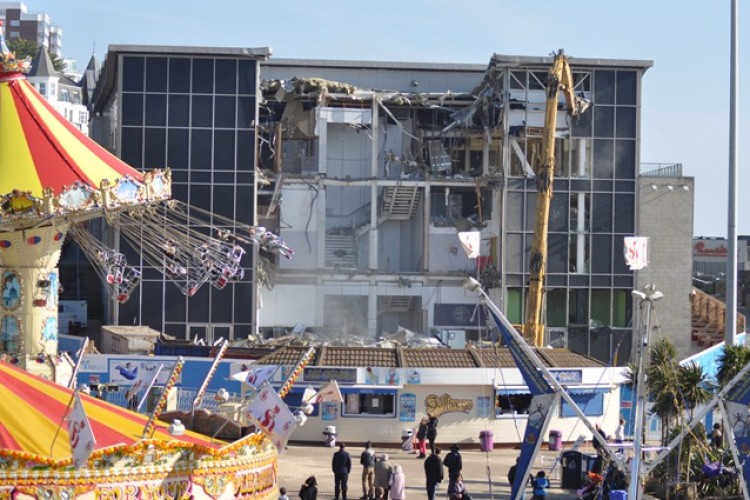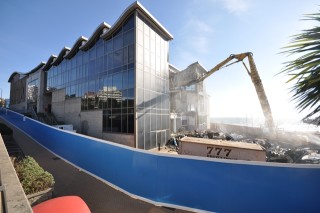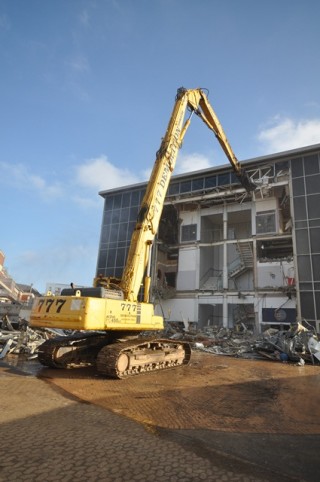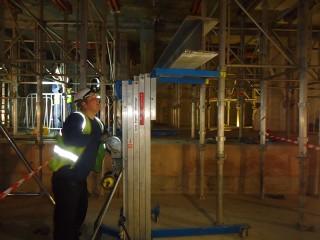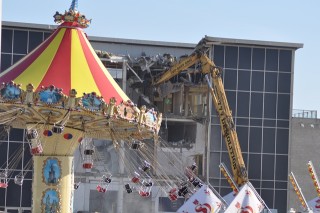It was only built 15 years ago but has always been considered by many to be an eyesore on the seafront. It closed for refurbishment in 2005 but never reopened. In 2010 the local council took over the building with a view to finding a developer to remodel it. In the end, it decided to just pull it down and hand over the space to public events. The new event space should be ready for use this summer.
Work began on stripping out the inside of the building in November 2012. Last month the heavy machinery moved on site, courtesy of demolition specialist 777 working for main contractor Interserve, and structural demolition began.
Preparations involved strengthening the ground floor slab and basement to withstand the demolition works. Interserve project manager Chris Seymour describes how the work is being handled: “We are using shoring from RMD Kwikform and Komatsu 55-tonne, 50-tonne and 20-tonne demolition excavators, plus smaller ancillary vehicles, including Bobcats, to complete the job. In a scheme of this kind, we would usually be required to demolish the entire building. However, in this case we have been asked to preserve the basement.
“We have installed new steelwork to the basement to be able to take 10kN/m2 – a highway’s loading capability. This capability is much greater than that of most buildings, and takes into account possible future uses of the site.”

In addition a shoring system has been designed and installed in the basement, with 750 props to accommodate the loads of the demolition plant and building waste. “Put simply, the slab was only designed to take the weight of pedestrian traffic through the building,” Seymour says.
“As the demolition team from 777 had to break down the building by travelling over the slab, extra support was required. So not only did the slab need to hold the weight of the largest 50-tonne excavator, it also had to cope with the additional weight of the debris falling from the steel framed structure.”
He continues: “As part of the preparation works for the propping system we removed a number of partitions, walls and stage areas in the basement. This was completed using a 1.5-tonne Brokk remote control excavator unit. From a health and safety perspective this was a much better solution to using a manned machine and also, thanks to the skill of the operator, proved to be a very swift solution.” However, debris from the basement still had to be transported out of the building manually, using a large amount of labour.
In total, approximately 13,500 tonnes of building waste is expected to be removed during the course of the project, including 3,000 tonnes of steel and 8,000 tonnes of concrete. About 90% of the waste is being recycled locally.
Got a story? Email news@theconstructionindex.co.uk

